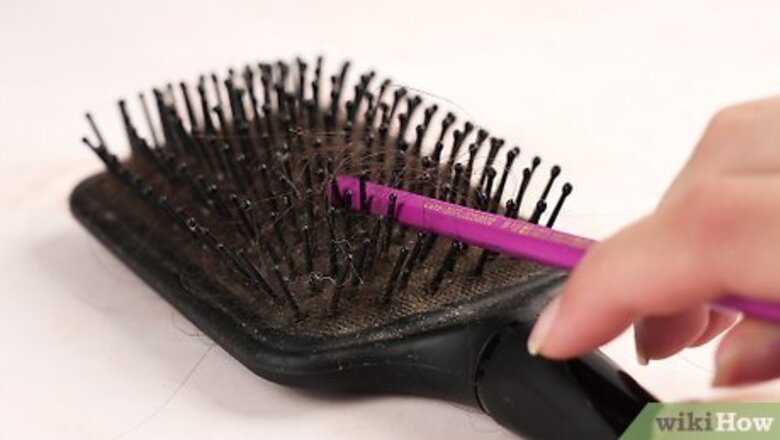
views
Removing the Hair
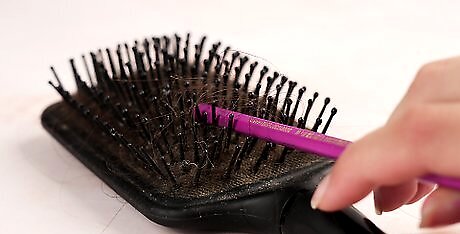
Insert the flat end of a pen through the bristles beneath the hair. Start from the handle end of the brush, pushing the pen toward the top of the brush. Try to nudge the pen beneath the majority of the hair clump so it’s easier to remove. Don’t slide the pen tip beneath the hair, as you don’t want to get any ink on your paddle brush.Tip:You can use any narrow object for this. A pencil or the narrow end of a rat-tail comb also work well.

Tug the hair clump upwards, until it’s visible above the plastic spikes. Pull the pen up to force the hair to the top of the plastic bristles. Depending on how tangled the hair is, you might have to work in short, quick motions to successfully pull it up. Continue tugging upward with the pen so the clump is resting on top of the plastic bristles. If there’s a lot of hair stuck in your brush, you might not be able to pull it all to the brush’s surface at one time. If this is the case, feel free to work in chunks.

Cut down the center of the hair clump with a pair of scissors. Separate the large, raised hair ball into 2 sections by slicing the middle. As you go, cut in small, careful sections to prevent the scissors from cutting the plastic bristles. Make sure that you’re starting from the handle end of the brush and working towards the wider end. Use safety scissors if you’d prefer to use something smaller.
Pull out both pieces of hair from the paddle brush. Use your fingers to pinch and tug the separated hair clumps from the body of the paddle brush. If you’re having difficulty removing all of the hair at once, try pulling the hair from the bottom or top of the clump. Once you’ve loosened the hair on 1 end, start tugging out the rest of the hair.
Washing the Brush
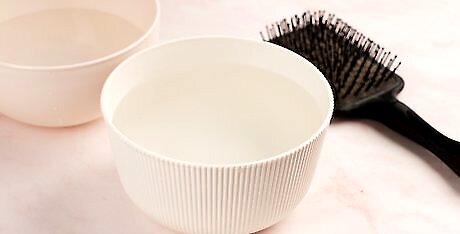
Fill a bowl ⅔-full with warm water another bowl ⅔-full with cool water. Set these bowl nearby, as you’ll be washing the brush with the warm water and rinsing it off with the cool water. Keep in mind that these measurements are approximate—if you’re using larger bowls, then you only need fill them up halfway. Don’t worry about exact measurements—just make sure that both bowls are mostly full.
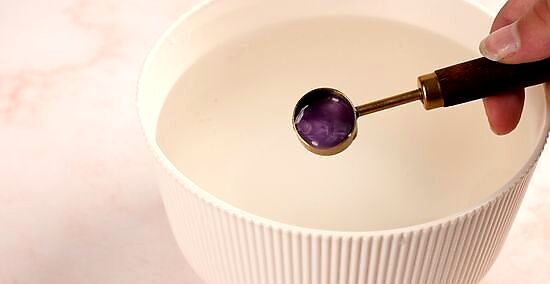
Add a small amount of mild shampoo into the warm water. Stir about 1 teaspoon (4.9 mL) of mild shampoo into the bowl, mixing them together until you’ve created sudsy water. Try and use shampoo that has “mild,” “gentle,” or “sensitive” written on the label. Since you’re just washing paddle brush, you don’t want to use any harsh detergents. Baby shampoo is also a great option!
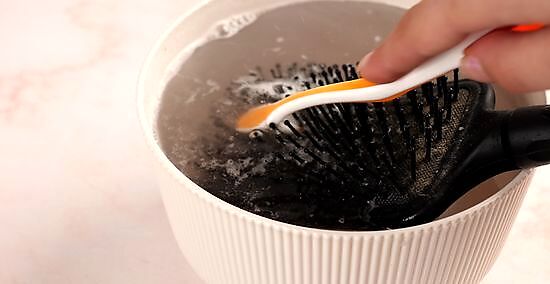
Scrub around the plastic bristles with a toothbrush to get it clean. Take a soft-bristled toothbrush and rub the shampoo solution through and around all of the bristles. Be gentle when you do this, as you’re just trying to wash away any dead skin cells or excess oil. Your paddle brush can become a haven for dust mites, old beauty products, and random germs. Try to scrub around all of the bristles to get your brush squeaky clean!

Swish the paddle brush in the cool water to rinse it off. Hold the brush face down and place it gently into the water. Swirl it around a few times, or until all of the suds are rinsed from the bristles. Try no to submerge the brush completely, as you don’t want the squishy base cushion to get moldy. Feel free to dump out both bowls of water once you’re done with this.
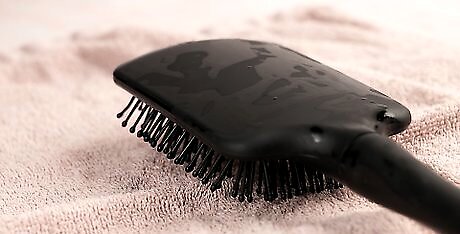
Set the paddle brush face-down on a towel so it can dry overnight. Lay a towel or paper towel on a flat surface, like a table, countertop, or vanity. Place your paddle brush on the towel with the bristles facing downward, so all the excess water can flow out. Let your brush dry overnight, or until it feels dry to the touch. Wait for your brush to dry completely before using it again.Tip: Blow dry your brush on low heat if you want to use it immediately.















Comments
0 comment